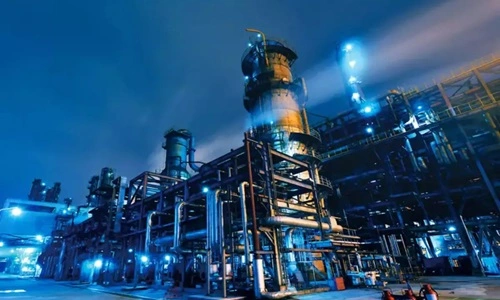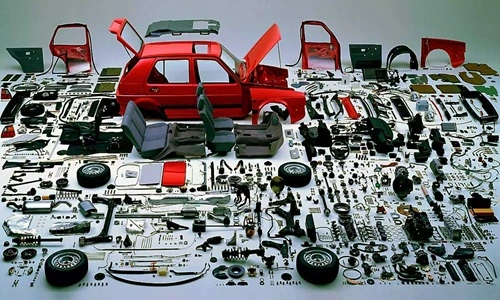Among all the industries that make up the pillars of growth and innovation in India’s elaborate tapestry of economic vista. With their advancements and perfections, these industries have opened new doors for investors in India and abroad. As we enter the heart of India’s economic prowess in 2024, we realize that some industries have not squelched by the tempest but withstood them to emerge stronger shaping the nation’s trajectory. Want to know which ones? Let’s now explore the fastest growing 10 industries in India for 2024.
Top Growing Industries in India
1. Healthcare Industry:

Technological advances and a greater emphasis on preventative care have transformed India’s healthcare system. The growing senior population and lifestyle-related illnesses have increased demand for high-quality healthcare. This business, which includes hospitals, medicines, telemedicine, and healthtech companies, contributes significantly to India’s GDP. Health care is one of India’s fastest-growing industry, exporting medicines and healthcare goods worldwide. Medicine, hospitals, medical plans, equipment, and insurance thrive in the private and public sectors. The pharmaceutical industry is expected to rise 16% due to an older population and lifestyle disorders. The global healthcare industry benefits 12.5% from India’s healthcare expertise.
2. Food Industry:

India, the world’s second-most populous country, has a diverse agricultural food economy. This sector has gone toward organic and healthier food according to client demand. Food delivery platforms and innovative food entrepreneurs have made the industry one of India’s top economic contributors. Agriculture makes India the world’s second-largest food producer, producing vegetables, fruits, dairy, chocolates, grains, poultry, meat, fish, sweets, and plantations. This broad firm benefits from agricultural tax discounts, 100% Export Oriented Units (EOUs), subsidies, industrial licenses, and joint ventures. India’s processed food industry has increased, strengthening its food manufacturing position. Government assistance and favorable tax policies have spurred innovation and investment in this business, improving its resilience to market fluctuations.
3. Digital Industry:

India’s digital commerce has exploded. India is a digital innovation powerhouse due to rising internet use and government schemes like Digital India. E-commerce, digital payments, fintech, and software development propel this industry, drawing investment and employment. Smartphone apps, social networking, and internet TV have replaced telegraph in India. Communications and digital technology are so integrated into everyday life that they are almost indistinguishable. The wealthiest businessman, Mukesh Ambani, drives this digital revolution with INR 9,090 crores USD. His innovative leadership and ideas have revolutionized India’s digital economy.
4. Financial Industry:

The Indian financial sector provides money and encourages industrial growth. Underrepresented communities are more financially included because to digital banking and fintech. Industry’s durability and agility make it strong in India’s economy. Recently, smart apps and internet connection have improved digital payments. Demonetization boosted digital payments in India. Government encouragement has made India’s mobile payment system one of the world’s most advanced. Rural Common Service Centers (CSCs) use technology to increase financial literacy and access. Leading Indian financial institutions include Bajaj Finance, Aditya Birla Finance, L & T Finance, Tata Capital Financial Services, Muthoot Finance, Mahindra & Mahindra, HDB Financial Services, Power Finance Corporation Limited, Shriram Transport, and others. These organizations provide a wide range of financial services to urban and rural citizens, boosting India’s economy.
5. Infrastructure Industry:

India’s rapid urbanization and industrialization depend on infrastructure. Investments in roads, trains, airports, and urban infrastructure have increased economic development and connectivity nationwide. Smart Cities and Bharatmala demonstrate sector development and modernization. Infrastructure benefits rural communities and modern businesses. Construction and infrastructure development have increased under Narendra Modi’s “Make in India” campaign. These projects aim to make cities dynamic hubs with airports, hospitals, schools, efficient transportation, and well-connected roads. Strong infrastructure helps India’s tourism sector grow by supporting industrial growth and new tourist attractions. Strong infrastructure unleashes the nation’s economic potential and supports equitable urban and rural development by facilitating seamless transit and distant access.
6. Software and Services:

Software development and IT services in India are world-class, making it a leading outsourcing and technology solution destination. Blockchain, AI, and cloud computing have enabled industrial innovation and progress. In India and beyond, IT businesses spearhead innovation. Infosys, Wipro, TCS, and Tech Mahindra dominate and provide diverse software and services. These corporations say India excels at global technological solutions. India’s IT services’ cost competitiveness draws global investors seeking value and innovation, driving strategic investment. With 73 billionaires, this sector has the second-largest group in India. Many billionaires demonstrate the sector’s economic might and wealth creation. In the digital era, India’s software development and IT services will fuel innovation and economic growth.
7. Chemicals and Petrochemicals:

The chemicals and petrochemicals industry supports manufacturing, agriculture, and healthcare. Indian chemical businesses lead global efficiency and competitiveness with innovation and sustainability. From specialised chemicals to fertilisers, the sector’s varied range supports industrial growth. India relies on the chemicals and petrochemicals sector, which accounts for 6% of GDP. IPCL, GAIL, HPL, and Reliance Industries form the industry. With its wide range of downstream products, this industry has boosted India’s economy. The chemicals and petrochemicals business has produced 57 millionaires, fourth in the country. This sector has produced wealthy people like Mukesh Ambani and Sri Prakash Lohia. Their innovative leadership and entrepreneurial talents have enabled India’s chemicals and petrochemicals sector compete worldwide.
8. Textiles, Apparel, and Accessories:

The textile industry, India’s oldest and most significant, exhibits its heritage. India leads the globe in textile manufacture and exports owing to its skilled labor and raw materials. From handloom art to current fashion trends, the sector flawlessly integrates legacy and innovation for local and international markets. India’s textiles, apparel, and accessories sector is longstanding. India dominates textile and garment production, influencing worldwide fashion. This vibrant industry provides traditional ethnic clothing and new styles, showcasing India’s cultural diversity and creativity. Textiles, clothes, and accessories have created 36 billionaires and strengthened the economy. The wealthiest in this business is Harish Ahuja, worth INR 5,900 crores. His business abilities and strategic vision show textiles’ endurance and innovation, guaranteeing India’s textile dominance.
9. Real Estate:

Despite periodic oscillations, India’s real estate sector drives economic development by offering attractive investment opportunities and generating auxiliary industry demand. Rapid urbanization and rising middle class ambitions drive demand for residential and commercial assets. Government programs like Affordable Housing and RERA (Real Estate Regulatory Authority) have increased openness and accountability, boosting investor and consumer trust. The housing, hotel, retail, and commercial subsectors of India’s real estate industry are globally recognized, and property prices are growing. The tenth-highest generator to billionaire wealth in the nation, this dynamic business has produced 33 billionaires. The real estate sector’s durability and agility demonstrate its importance in India’s economy. As an indicator of economic health and urban development, the industry continues to shape India’s growth trajectory and provide many possibilities for investors and entrepreneurs.
10. Automobiles and Auto Components:

Indian manufacturing depends on the car sector, which generates GDP, employment, and exports. Local and global automakers have developed business in India because to a big domestic market and favorable government regulations. The sector stays relevant in the global car industry by focusing on innovation, sustainability, and electric mobility. India is a major commercial vehicle manufacturer and auto component supplier. EV sales are estimated to reach 4 million by 2025 and 10 million by 2030. This predicted growth emphasizes the sector’s importance in India’s sustainable transportation transition.
Conclusion
India’s economic vista is speckled with dynamic and resilient concerns in its key industries by the year 2024. The sectors, be it healthcare with digital innovation or manufacturing and infrastructure development that are propelling them have been a positive influence to shape up the future country. As India continues the journey of transforming her economy, these sectors will continue being the gateway through which the nation materializes its real potential on the global arena.

Meet Suhas Harshe, a financial advisor committed to assisting people and businesses in confidently understanding and managing the complexities of the financial world. Suhas has shared his knowledge on various topics like business, investment strategies, optimizing taxes, and promoting financial well-being through articles in InvestmentDose.com


